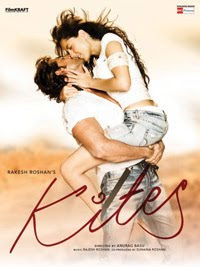I had been telling friends that Llosa is my favourite Latin American author and advising them to read his novels. I had gifted his books to some friends including one to Jayakandan my favourite Tamil writer. I had used the stories of Llosa in my speeches to describe the fascinating Latin American culture and society. The latest use was in my speech at Noida on 30 August and in my speech ( http://www.youtube.com/IndembassyAR#p/u/8/aFZVu-J5hQo) on 17 August at the University Women´s Club in Buenos Aires. When I was in Delhi as Head of Latin America division in the Ministry of External Affairs, I had arranged an invitation for Llosa to visit India as the guest of Indian Council for Cultural Relations in 2006. He had accepted the invitation but could not give date since he was busy for the next several months.
Here are some of the blogs I had written on the novels of Llosa in my Latinamericanaffairs blog.
Captain Pantoja and the special service
http://latinamericanaffairs.blogspot.com/2009/11/captain-pantoja-and-special-service.html#links
Bad girl – novel by Mario Vargas Llosa
http://latinamericanaffairs.blogspot.com/2009/01/bad-girl-novel-by-mario-vargas-llosa.html#links
Conversation in the Cathedral
http://latinamericanaffairs.blogspot.com/2006/06/conversation-in-cathedral.html#links
"The way to Paradise" http://latinamericanaffairs.blogspot.com/2006/04/books-of-laura-restrepo-and-mario.html#links
In my January 2009 blog on ¨The Bad girl ¨, I wrote ¨It is a pity that Llosa has not yet been considered for Nobel prize¨. He was said to be not sufficiently leftist or liberal to qualify for the Nobel prize. Politically, Llosa is centre right and I differ with him on many Latin American political issues. His son Alvaro Vargas Llosa is even more right. He cowrote a book ¨Guide for a perfect Latin American idiot ¨ a satirical work on the Latin American left.
It is said that Borges of Argentina ( another great writer of Latin America and one of the best in the world ) has not got the Nobel prize because of his closeness to the rightist military dictatorship. But Poor Borges was driven to the right by the intolerant leftist Peronist authoritarinism.
My favourite novel of Llosa is ¨Aunt Julia and the script writer¨. In this novel, an adolescent boy falls in love with his middle-aged aunt. She tries to dissuade him saying that his infatuation would disappear later when he discovered young girls. But he persists with his declaration of true love and even proposes marriage. She again discourages him saying that such a marriage would not last given the prejudice against their age combination. When he insists, she asks him, ¨suppose we get married.. how long do you think that we would live happily?¨. The adoloscent boy replies without giving it any thought, ¨two years¨. She jumps up in excitement, ¨two years… 720 days.. great .. it is worthwhile to marry for two years of happiness¨ They get married and live together for over two years. Later I found out that this was the real life story of Llosa himself.
¨The storyteller¨ is another amazing novel which impacted me profundly. The story is about a university student who goes to the Amazon jungle and becomes head of a tribe and takes up the tradition of telling stories.
Llosa´s novels bring out the essence of Latin American way of life, love, sex, relationship and marriage realistically and magically. I say magically because he makes us love the Latino excesses and vices. Of course some of his themes are shocking to the conservative Indians. For example in the Diary of Don Rigoberto the husband lets his wife go on a trip with her boy friend and then discusses the trip with her. In the Bad Girl, the heroine lets herself go with all kinds of adventures crossing many boundaries. At the end, I found her adorable and could not contain my tears when she died….
Most of his novels are about his native country describing the life and society of Peruvians. A few of his novels have covered other countries. In ¨The war of the end of the world¨ the story takes place in Brazil. Llosa says that this was the best among all his novels, the most ambitious project he had ever undertaken and the book on which he worked the longest and with the most difficulty. He was inspired to write this after reading the book¨Os Sertaoes¨by the Brazilian writer Euclides da Cunha. Another of his novels ¨Feast of the goats¨ is about the Trujillo dictatorship in Dominican Republic.
Llosa is not just a writer. He is a writer´s writer. In his book ¨letters to a young novelist¨ he gives advice to aspiring writers how to write novels. A writer, in his view, is a being seized by an insatiable appetite for creation, a rebel and a dreamer. Questioning of real life is the secret raison détre of literature, according to Llosa. He gives a Latino definition of writing novels saying that it is the equivalent of reverse striptease.
In another book, A writer´s reality he explains what provoked or motivated him to write some of his novels. He describes in detail the process of his writing the novels and the influences and inspiration behind them.
In his autobiography A fish in the water written in 1993 he has given a glimpse of his evolution as a writer and an insight to the Peruvian society and politics.
Here I am with my collection of books of Mario Vargas Llosa....
Could there be any better gift for someone ¨Passionate about Latin America¨?














